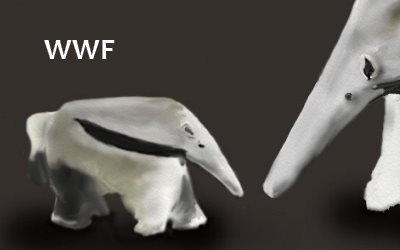Anteaters
Anteaters
Anteaters
Giant Anteater: Behavior, Habitat, and Conservation
Giant anteaters are mostly solitary and roam vast territories in search of food.
They have poor eyesight but an excellent sense of smell, which they use to locate ant and termite mounds.
Despite their large size, they are gentle creatures that avoid confrontation unless threatened.
-
Feeding Habits:
-
They use their powerful claws to tear open insect nests.
-
Their long, sticky tongue allows them to consume up to 30,000 insects per day.
-
Since ants and termites can bite, they spend less than a minute at each nest before moving on.
-
-
Sleeping & Activity:
-
They are mostly nocturnal or crepuscular (active at night or dusk) in hot areas.
-
They sleep curled up with their bushy tail covering their body, blending into their surroundings.
-
Habitat
Giant anteaters are found in diverse environments across Central and South America, including:
✅ Grasslands (Llanos of Venezuela)
✅ Rainforests (Amazon Basin)
✅ Dry savannas (Brazilian Cerrado)
They require large home ranges to find enough food, which makes habitat fragmentation a major threat.
Conservation Status & Threats
✅ IUCN Status: Vulnerable
🚨 Major Threats:
-
Deforestation (loss of grasslands and forests)
-
Road Accidents (frequently hit by cars)
-
Fires (both natural and human-caused)
-
Hunting (sometimes killed for their claws or mistaken as pests)
In some areas, conservation programs aim to protect the species
by establishing wildlife corridors and promoting safe road crossings.
Giant Anteaters: National Geographic





